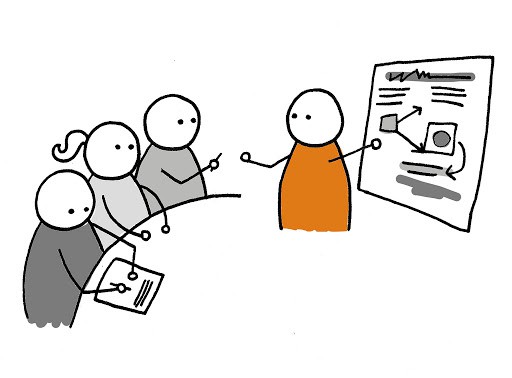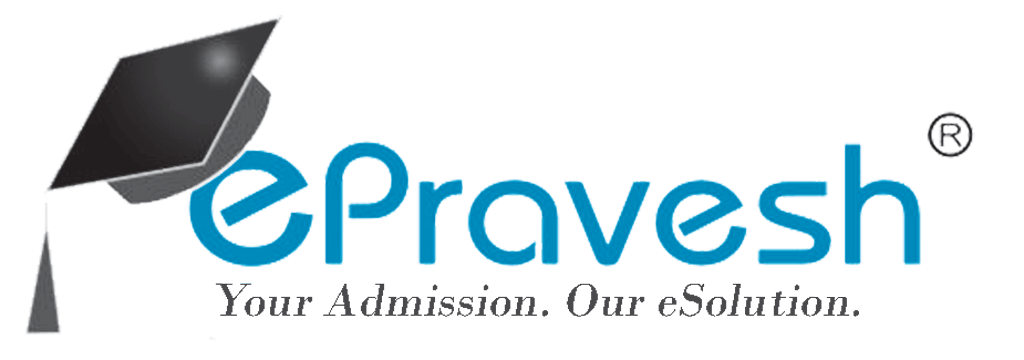
When it comes to the admission process, most of the institutes used to opt for the traditional approach of publishing an advertisement in the newspaper, inviting applications, manually screening applications, documents etc.
The admission process is an entry point for the prospective student and the simplification of it would help the institute to attract more students.
These up-gradations are not only going to benefit the institutions, but also the students or applicants to a huge extent.
Article Contents
Traditional Admission Process

Talking about the traditional methods of admissions, earlier, the methods used to were or might be convenient or compatible with the ‘technology’ that was available at that time.
The earlier methods that were in practice for conducting admission procedure are something we need to take a look at so as to compare them with the new Automated ones.
The initial step of informing the candidates/applicants about the admissions being open was either through notices put up on notice boards in colleges/universities or through publishing news in the daily newspapers.
The generation of the admission forms was done the hardcopy style. Hard copies of the forms and prospectus were printed and then made available to the applicants on a paid basis.
The submission of the filled up forms was supposed to be done by physically going to the colleges/institutions.
Later the evaluation of the eligible students was done manually by the particular staff appointed to do it.
Then comes the stocking up part of the forms, which needed a place and manpower as well to do it.
The declaration and publishing of the merit lists too were done manually which indeed was a tedious task.
The next part of the admissions would be alloting the seats to the selected candidates. Candidate verification was used to be done manually and physically, by asking the applicant to visit the verification centres assigned to them.
The entire enchiladas of the further process too were done physically; not to forget the fee submission and the rest left formalities.
Digitized / Online Admission Process

Speaking of technology, it keeps on changing from time to time. It keeps on bringing in more and more upgradations and advancements.
The call for admissions being open is now done through college/university websites. The students are informed about the forms being available through emails, SMS, and call outs.
The concept of hardcopy forms is now something we would call ‘history’ since the forms are made available in the form of softcopies.
The interested candidates need to fill up the forms online itself; saving them and the institutions a lot of money over the printing and buying of forms and prospectus.
The time wasted to physically go and submit the forms also gets saved since the docility of the forms takes place online itself.
Coming to the part of the evaluation, in today’s date, it is being done online as well. The selection of the eligible candidates is done according to the selected criteria of the institution.
The storing and stocking up part of the forms is yet another issue resolved. The virtual forms don’t need any kind of physical space for storage. They are stored virtually, reducing the chances of losing, misplacing or damaging them.
The publishing of the merit lists or the list of the selected candidates is something that has been digitised, has saved a huge deal of time for the institutions and the entrants.
The candidate verification process has become very user-friendly and free of human error. Now all the entrant has to do for his/her verification, is simply upload soft copies of the Government issued ID-cards while registration itself. This verification process has become utterly simplified and convenient for both the parties (institutions and applicants).
The rest left the lengthy process of the admissions too is done via the internet these days, saving a lot of manpower and futile expenditure.
Although the entire system cannot be changed, there are certain specific elements that could really use the upgradations.
After a scrutiny of the whole education system, the major 3 procedures that need changes or upgradations are:
1. Standardize Admission Process

Everyone wants things the easy way. Nobody wants to get stuck in the tedious methods or practices of the admissions. Simplified and non-tedious way of admissions is the new trend.
This exact is the reason for the simplification of the delayed admissions that is the need for the date. The easier the process, the more students or applicants to the institutions!
The First crucial thing is to see if the admission process across various levels preschool, primary school, high school etc is standardized or not.
If there is a different process for each level then student/parents would get irritated due to the time-consuming process.
If all the procedures of admissions become standardized and generalised, then it is going to be an immensely effective initiative towards admission simplification.
This process or system needs to be same overall. In the universities, the colleges, at local and national, both levels.
A simple and generic formatted or drafted method to make admissions if exists will come in handy anytime!
2. Utilize the technology

Earlier, the entire long process of admissions used to take place manually or physically.
Meaning, the students and institutions had to deal with something called “hard copies” of the forms or fee challans or even the selection merit lists.
All this hardcore paperwork is now being replaced by softcopies of the forms and challans and lists.
Automating admission procedures by using an online admission platform like ePravesh.com would help to simplify the process and it would also result in cost saving related to administration.
In such a scenario, students or parents need not have to stand in the queue and the entire process can be executed in a paperless format.
So, how this can be done?
The answer to your question, as we saw earlier is already being answered.
Adopting the concept of soft copies of forms, challans, lists and other notices related to any announcements regarding the admissions is now something that is mandatory.
There are more pros than cons to the adaption of online systems these days, making it feasible and ‘trendy’ at the same time.
The more and more use of technology and digitisation, when admissions take place, needs to be done.
Apart from the part of being simplified and user-friendly, going online with admissions is also going to be cost-effective for both the parties in admissions.
For the institutions, they can get to save a large amount of money on the expenditures of printing forms, making a place available for the stocking up of documents, allotting manpower to conduct the whole admissions, and many others.
As of students or the applicants, they get to save the money that they formerly had to spend on buying the prospectus’ and forms of the colleges they wanted entrance in.
This is the part where the Standardization of admission process comes to the rescue. The students do not need to go separately and buy forms from different colleges. One standardized soft copy of the form is made available to all on the university website.
The verifications being made digital saves time on that part as well. The soft copies of the ID proof’s of the candidate collected at the time of form submission itself, verifies the identity of the applicant.
Technology can be said to be yet another boon for the modern education system!
3. Training for Technology

Even if the technology is in place for help, it is important to use it in a proper way to reap the benefits out of it. People who are going to use technology should have detailed knowledge about the system, its functioning, its effectiveness, etc.
The staff from the institutions or say colleges should be trained properly to access the systems. The Staff members being one of the end users, have to understand the working of the systems.
The students or the applicants too need to be aware of the operation of the websites, so as to fill in the forms and check up on the updates about the online notices and declarations.
Effective training to end user will increase the effectiveness of the system and system can be integrated into the culture of the institute. Without training of the system, its use might not be helpful to automate the admission process.
Training the users with the proper knowledge of the online system will prove to be another major step taken towards virtualisation of the entire admissions.
When the entire user ‘family’ will be trained well, or will be accustomed to using the online system, then and only then will the changes aimed at, will take place.
Pros & Cons

The main aim or goal of the upgradation of the online admission system is initially to reduce human labour, which can be used or rather utilised in much better work.
Apart from saving human labour, digitisation also targets to save a large amount of money which can and definitely be availed for other needed facilities or anything.
Perfection or at least some tried might be gained through going online. The systems being designed to perfection, are more than likely to conduct the admissions in an error-free manner.
There is also going to be a saving of a lot of physical space that was earlier being used to stock the forms and other documents of the applicants. The concept of hard copies is now going to be that history might remember!
A core benefit of online admissions will be that the generation will become completely tech-savvy, standing a chance to survive anywhere in this virtual world.
We live in a world where everything is available at our fingertips and technology does exactly that; literally, these days.
The concept or point of technology is to ease the human work.
Adoption of technology is going to be exactly that for us. Ease up our that work which can be done by computers. This is going to save our that energy which the humans can end up using in doing something more creative, and productive.
Virtualisation is just another benediction for mankind!



